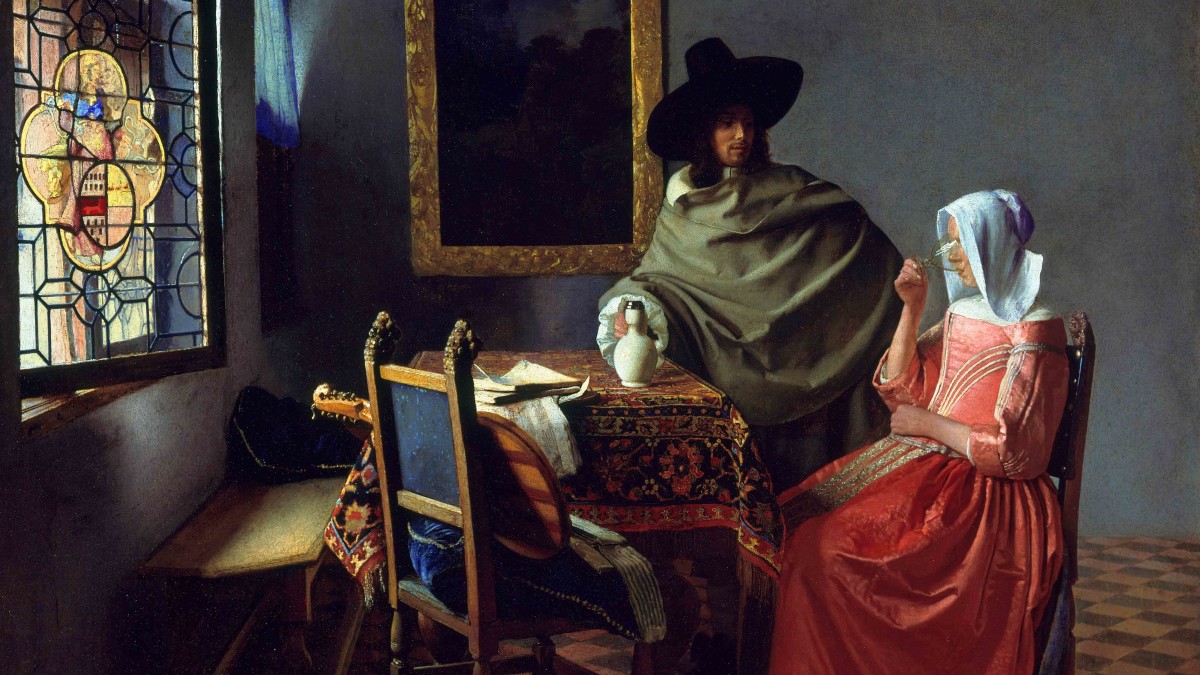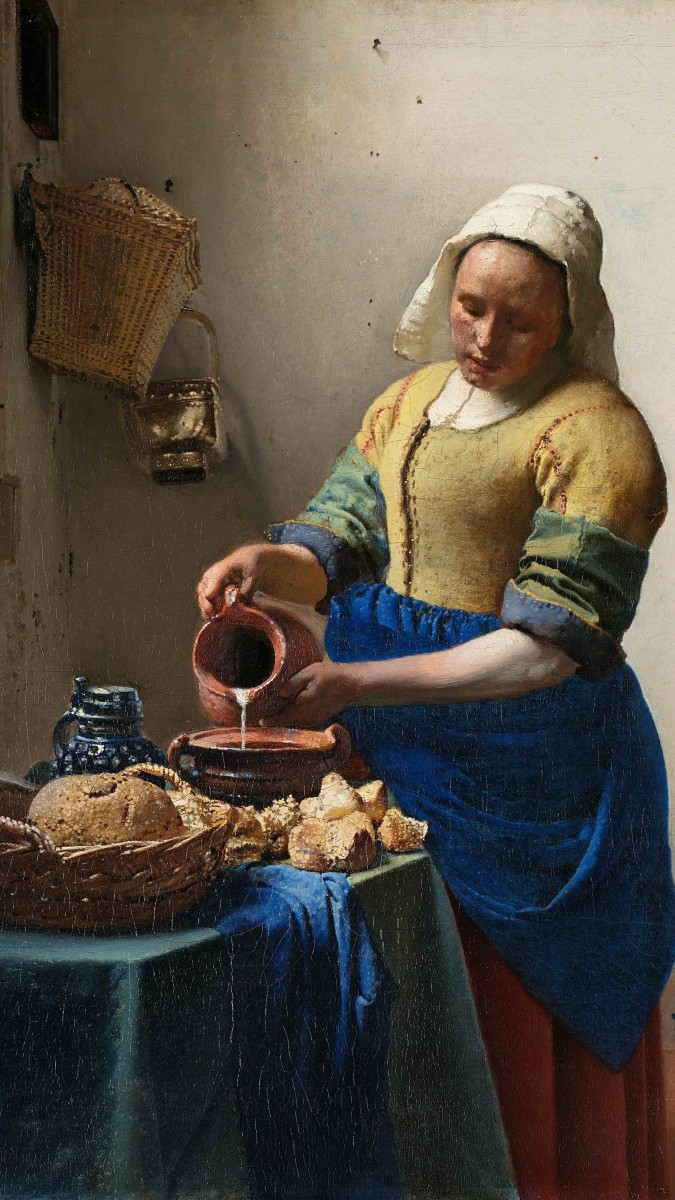
Johannes VemeerThe Glass of Wine
The Glass of Wine
In the late 1650s Pieter de Hooch developed a type of genre painting that epitomizes what has come to be known as the Delft School. In such paintings, a group of figures is situated in a spacious, light-filled interior or courtyard. The architectural space is carefully defined, and the perspective recession of windows, ceiling beams, tiles, and bricks is accurately constructed. Figures, whether they be socializing around a table or occupied in domestic chores, tend to be set back in the space rather than situated in the foreground. Vermeer's The Glass of Wine belongs entirely in this context. It is one of the clearest demonstrations of how he responded to the achievements of another artist. In this scene Vermeer depicted a spacious interior and set the figures back from the picture plane. Laws of linear perspective are rigidly and obviously followed. The subject of figures drinking around a table, and even the portrayal of a woman drinking from a glass, are taken from De Hooch.

Price: Free Digital Edition: 0



